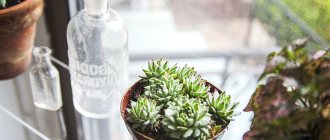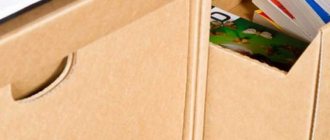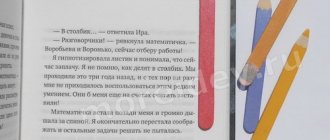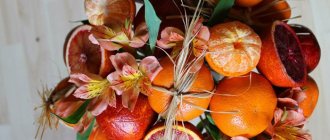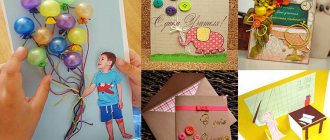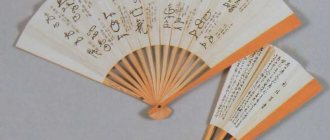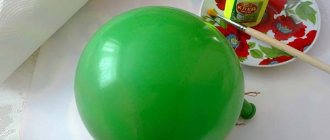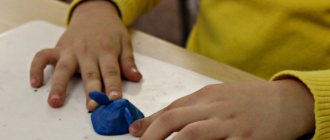Many people would like to have porcelain products in their home, as they decorate the room and create coziness. But few people realize that there is a recipe for cold porcelain without cooking that anyone can master. Thus, it is possible
It is important to know: cold porcelain is a very cheap and safe material. To make a dish or figurine from such porcelain, you do not have to have professional skills and spend your entire life in sculpting. Now it is possible to make crafts from cold porcelain with your own hands for beginners.
Historical aspect
Most historians are inclined to believe that the Chinese first began producing porcelain in the 6th century. In ancient times, the material was used to make services from which tea was drunk. This utensil was also used in the Chinese tea ceremony.
The very first porcelain had blue and greenish shades, this distinguished it from other materials. Previously, the Chinese made art objects in the same style: necks in the shape of animals and vessels similar to dragons. They learned to make white porcelain in China only after the 10th century. After this, trade ties between the Asian country and Europe strengthened significantly. Europeans liked the unique porcelain products from China.
Although Europe did not immediately figure out the formula for porcelain, the best minds of that time worked on it for many years. It was only by the 16th century that soft porcelain was invented in Italy, which immediately became popular in Germany and France. But in the 18th century, the famous alchemist Friedrich Bittger discovered hard porcelain, from which they began to make the most beautiful dishes. Even their own painting masters appeared. European porcelain was very different from other materials, as it had special marks. Porcelain factories began to open in England, Germany, the Czech Republic and other cities.
In Russia, the first porcelain factory was built in the middle of the 18th century in St. Petersburg. At first, Elizabeth attracted foreign specialists to set up the production line. But later Dmitry Vinogradov mastered the domestic method of producing solid material from local materials. A few years later, the Imperial Porcelain Factory was renamed the Porcelain Enterprise named after. M.V. Lomonosov.
Russian factories began to focus on a wide range of consumers at the end of the 19th century. Due to this, the cost of porcelain dropped significantly and the production line was mechanized. However, even now there is a category of porcelain items that are made by hand. As a rule, these are very expensive high quality sets. Russian porcelain is valued all over the world, so it is sold at auctions for huge sums of money. Private collectors are willing to pay a fortune to get their hands on a treasured piece of porcelain.
Recipe
Consider one of the recipes for making porcelain:
- 1 cup rice or corn starch;
- 1 cup PVA glue;
- 2 tablespoons glycerin;
- 1 tablespoon of rich baby cream.
Mix all ingredients thoroughly and let steep for 15-20 minutes. Do not store in the refrigerator or leave at room temperature for more than 2 hours.
Recommendations when working with cold porcelain:
- The product can be painted only after complete drying, but not earlier than a day later.
- Porcelain can be painted with oil, acrylic paints, and gouache. Coloring with water-based paints (food coloring) should be avoided.
- When working with porcelain, so that it does not stick to your hands, lubricate your hands with cream.
- Recipes that contain water are fragile and short-lived.
- If you add 1 tablespoon of citric acid to the composition, the product will be stronger and more durable, since it creates a preservation effect.
- Do not store near water or in direct sunlight.
- For storage, optimal temperature conditions must be maintained. At 10°C the structure will collapse. At high temperatures, the structure also collapses - the material shrinks and crumbles.
- To ensure that the products last as long as possible, they are coated with varnish. Thus, the product is protected from moisture, color and shape are preserved.
- It is recommended to use all the porcelain at a time, but if there is any left, store it in a plastic bag or tightly sealed container.
- The surface of the products can be sprinkled with small beads, seed beads, and sand.
- If the porcelain material sits for a long time, it becomes liquid. It can also be used. Using a medical syringe, you can draw or write with it, after pre-treating the surface with glue.
Related article: How to sew a bag with a zipper
Tools required for work:
- rolling pin and cutting board;
- scissors;
- tweezers;
- wire cutters;
- toothpick or knitting needle;
- brushes and paints;
- gloves;
- thin wire;
- PVA glue.
DIY cold porcelain master class for beginners without cooking
In its original form, porcelain resembles clay, although it hardens after thorough drying. Therefore, any decorations and accessories can be made from porcelain, including flowers, shells, and buttons. At the end of sculpting, it is possible to sprinkle with beads for beauty and varnish.
They learned to make cold porcelain only in the 19th century, and it was then that craftsmen began to make stunningly beautiful figurines from this material. And although there is no exact information about the discovery of the material, many scientists are inclined to believe that the Argentines became the discoverers.
However, a large amount of information about the professional master Pyotr Ivanov has been preserved in Russia. He studied art at the Imperial Porcelain Factory. After some time, Peter began to create original objects from cold porcelain. According to the documentation of those times, it was this master who was the first to make flowers from a unique material. These flowers then began to decorate bottles of perfume that were delivered to the imperial family. Thus, Pyotr Ulyanovich became famous throughout the Russian Empire. He was able to make his cold porcelain recipe at home without cooking. In this regard, everyone can make cold porcelain with their own hands, master class flowers video.
Although there are earlier archival documents that confirm the existence of cold porcelain. For example, in China there are chronicles that mention different types of cold porcelain sculpting. Despite the fact that the recipe for cold porcelain at home is similar to the material created by Peter Ivanov, the name of Chinese porcelain is different.
conclusions
Cold porcelain can be used to make not only flowers, but also various souvenirs that can be presented to loved ones - keychains, personalized hand-decorated cups, figurines, panels and entire paintings. Such a gift will not leave anyone indifferent.
Cold porcelain crafts for beginners
Of course, figurines and various crafts made from cold porcelain turn out to be exquisite and beautiful. However, they are no less demanding of themselves. It is important to remember that products should be stored away from liquids, moisture and sunlight. The fact is that cold porcelain tends to absorb liquid and become limp. This means that a toy or figurine may lose color, shine and structure over time. Therefore, it is best to place vases and figurines in a dark place.
Before you make cold porcelain at home without cooking, you need to understand that crafts, molds and figurines should be kept in a room with optimal temperature conditions. The structure of the material will collapse if the room temperature is below 10 degrees Celsius. At this moment, moisture particles crystallize, which negatively affects the quality of the product. But the heat also destroys the cold porcelain, and as a result the figurine crumbles. All these nuances should be taken into account before making your own cold porcelain master class for beginners.
But experts have learned to extend the performance characteristics of cold porcelain products. They are simply varnished. Then beautiful objects are not afraid of either moisture or sun. At the same time, the product retains not only its shape, but also its shine and color.
What to sculpt?
Start with the easiest one, especially if you haven't sculpted at all before. Knowledgeable needlewomen believe that the simplest thing in modeling is flowers. It’s not difficult to sculpt them, and as the process progresses, everyone will understand all the subtleties of working with porcelain. Below you can see detailed step-by-step instructions for making flowers from cold porcelain.
Related article: Wood burning: master class for beginners with photos and videos
Bouquet of lilies of the valley.
Blooming bud.
Naturalistic iris petal.
White bud.
If you have experience in sculpting, try making a toy. This will be a little difficult for beginner crafters, so get started with the figures after some practice.
Bear.
Giraffe.
Puppy.
These are quite easy DIY master classes on cold porcelain crafts.
What is rarely sculpted from cold porcelain are fruits, vegetables and berries. Firstly, such a dense product will take a very long time to dry. Secondly, this material does not become stone, it retains a slight softness, so such rounded figures are quite easily deformed. The product loses its attractive appearance and can be safely thrown away.
If you plan to use such products as decorations (that is, they will simply lie in some place), then you can mold them, since the chance of damage to the figure is significantly reduced.
Cold porcelain jewelry
According to experts, this material allows you to sculpt anything, including decorations and interior items. At the same time, every beginning craftsman can bring all his ideas to life by creating unique hair clips, flowers and other necessary things. You can even make gifts for children: cartoon characters, fairy tale heroes, animals and much more. In any case, cold porcelain figurines will decorate any room in the house, including the bedroom and children's room. Cold porcelain without cooking from potato starch is within the power of every person.
If a person has creative thoughts, then you can make pots for your favorite flowers. After all, it is now difficult to find original items in ordinary stores, since most are produced in ordinary factories. But the DIY cold porcelain recipe makes it possible to create elegant and original items for the home: photo frames, lamps, vases, flowerpots, sculptures and much more.
You can also decorate your apartment or house using cold porcelain: flowers, greenery, garlands, figurines of exotic animals, themed compositions, figurines, etc. There is no need to go to the store for a gift, since you can make your own flowers from cold porcelain and polymer clay in contact. Relatives, relatives or girlfriend will be happy with such a surprise.
Features of cold porcelain products
Products made from this material are extremely beautiful, but no less demanding. They must be stored or installed away from moisture and direct sunlight. You need to understand that cold porcelain is a polymer clay that can absorb moisture and become limp and lose color from exposure to sunlight. Vases with stucco, flowers and other decorations made of cold porcelain should not be placed on a window or near a source of water.
Original lampshade made of cold porcelain
In rooms where objects made of this material are located, the optimal temperature regime for them must be maintained. If the air is colder than 10º C, the structure will collapse, as moisture particles in the composition crystallize. High temperatures also destroy cold porcelain - it simply dries out and crumbles.
You can extend the “life” of cold porcelain products using varnish coatings. They will not only protect against moisture, but also help maintain the shape, color and shine of the surface.
Original New Year's decor
DIY Christmas tree toy
Process of preparing cold porcelain
To prepare polymer clay, you do not need to have any special knowledge. There are several ways to do this, but in this case the simplest option will be considered. You need to take potato, rice or corn starch, polyvinyl acetate emulsion in water, glycerin and cream for children. Then mix everything in equal proportions.
After thoroughly stirring, leave the mixture for 30 minutes. During this time, the components will turn into the mass necessary for modeling. It is important to know: under no circumstances should cold material be placed in a cold room or refrigerator; it must be stored at room temperature. Experts recommend sculpting immediately after preparing the consistency.
In some cases, people add citric acid to the material to improve the performance of the products. This substance creates a preservation effect.
If there is liquid in the composition, then you need to be prepared for the product to turn out fragile. Over time, the figurines will begin to emit an unpleasant odor, and the structure of the material will significantly weaken and change.
Ingredients such as food coloring and chalk give the figurines a vibrant color that lasts for a long time. Although finished products can be painted after complete drying, but not earlier than one day after sculpting.
To create a real masterpiece from cold porcelain you will need the following tools:
- Cosmetics for decoration.
- Paints, brushes.
- Toothpicks.
- Some construction tools.
- Protective gloves.
- Towel, napkins.
- PVC glue, metal wire.
- Scissors.
- Rolling pin.
If a person has a great flight of imagination and a creative reserve, then in the sculpting process you can use threads, beads, fabrics and other accessories. These decorative elements will allow you to create not only a beautiful, but also a unique piece of art.
For those who are new to modeling, you can consider a more complex recipe for preparing the material.
Mix PVC glue with cornstarch in a small container. Then add half a glass of plain water, a little glycerin and a spoonful of baby cream. You can also use an inexpensive face cream to prepare the mass. After stirring the elements of the mixture, the texture should be smooth and pleasant to the touch.
It is worth noting that finished products dry for about two or three days. During drying, it is better not to touch them, but to let them dry completely. If, after preparing the porcelain, there is excess material left, it can be placed in a plastic box and tightly covered with a lid. It’s better to put the leftovers in the refrigerator until the next creative evening.
Possible porcelain crafts
Before getting acquainted with the basic recipes for preparing cold porcelain, you should study the possible areas of application of crafts made from this material. DIY cold porcelain products:
- Children's toys (bears, giraffes, fish).
- Flower bouquets of all possible shapes and sizes.
- Details for homemade jewelry (miniature flowers, stars, beads).
- Sets of tableware for interior decor (plates, cups, tea sets).
- Dolls, including interior models.
After drying, all finished products are decorated by applying paints, coloring pigments or opening them with acrylic varnish. The work also uses a combination with other materials (felt, corrugated paper, beads, seed beads, buttons).
Cold porcelain flowers master class with step-by-step photos
Experts believe that it is better for beginner sculptures to start with simple objects. In this case we will talk about the sakura flower. The material must be painted pink and white before sculpting. You also need to cut the porcelain into bars to later make petals out of them. In the process of cutting material, it is necessary to monitor the length, shape and width of the workpieces.
After cutting the material into small rectangles, you can begin sculpting the petals. This will be the first step towards creating an original sakura. The edges of the flower should be white, but the base should be pink. After gluing the petals, use a toothpick to make small holes that will be needed for the wire in the form of a stem.
As for the buds, they are glued to a green cup with a white edging. In this case, it is worth placing the buds securely on the stem so as not to damage the flower during transportation.
To create a “living sakura branch”, you need to try to create the same one from wire. First you need to collect all the metal blanks in one bundle, and then twist them beautifully to create a single composition. If all the steps are performed correctly, then the sakura can be placed in a vase or pot as desired.
Also, those who want to do sculpting have the opportunity to make a flower like a rose from cold porcelain master class. In this case, the manufacturing process is the same.
Sakura made using cold porcelain technique
Some of the required material needs to be made white, and the other painted pink. Two layers of different shades need to be fastened together and cut into rectangles - blanks for petals.
Using tools, you need to shape the petals so that the base is pink and the edges are white. Using glue, fasten the petals, and in the middle, using a toothpick, make a hole for the wire, which will serve as a stem. After drying, the flowers need to be collected into branches to naturally replicate the structure of a real flower.
Cold porcelain flowers master class video
Now, to prepare cold porcelain with your own hands without cooking, master class, you can use open resources on the Internet. There are sites where not only thematic photographs are shown, but also various videos are posted. Thus, beginners can see in detail a master class from professional masters.
There is no need to be afraid to do something with your own hands; the technology for preparing cold porcelain at home is very simple. You don't need a lot of components to create unique and creative items. It is enough to have a rich imagination and a desire to give your loved one a gift.
If you use all the tips, you can create real comfort and your own style at home or in an apartment that will delight your friends, relatives and loved ones. Well, you can furnish the children's room with amazing figurines and figurines made of cold porcelain. After all, now there are so many different characters that kids like. By creating a cartoon character with your own hands, you can get a lot of positive energy from your child in return.
What can be created from cold porcelain
From this material you can sculpt everything - from women's jewelry to small interior items. Hair clips decorated with flowers made from this material look very original. For children, together with your children you can create fairy-tale characters, heroes of their favorite cartoons, which will decorate their room.
Many creative housewives decorate pots of indoor plants with cold porcelain moldings, frames, lamps and flowerpots.
A unique interior decoration will be garlands of flowers, greenery, animal or house figurines, and themed compositions made of cold porcelain. In addition, you can make an original and inexpensive gift for friends or loved ones.
Beautiful and delicate porcelain roses
You can make butterflies from porcelain and decorate your wall with them.
Cute porcelain bunnies
You can decorate a cup with cold porcelain figures
Cold porcelain figurines will decorate your home
Unusual New Year
You can decorate your next Christmas tree like no one else has. To do this, you need to make beautiful New Year's toys. The figures can be very different. In any case, your green beauty will turn out to be unique.
New Year's crafts made from cold porcelain with your own hands can be significantly expanded. This means making not only Christmas tree decorations, but unusual gifts.
Mugs, plates, photo frames, flower pots, keychains, bracelets. This is the minimum we can recommend. All you have to do is turn on your own imagination and bring it to life.
Believe me, such exclusive gifts will definitely please those for whom they are intended.
Make the world around you more beautiful. Magnificent hand-made porcelain products will help you with this.
Cold porcelain pendant for beginners
Little girls are very fond of all kinds of jewelry and, while sorting through the jewelry in their mother’s box, they often ask their mothers to try on their chains, earrings or bracelets. To protect your mother’s box from accidental losses, you can prepare your own box for your little girl with beautiful decorations made by mother’s hands from simple materials. I suggest mothers start creating jewelry for their daughters with a children’s pendant called “Polyanka” made of cold porcelain, decorated with dot painting, which is also called “pointillism.”
1. To make a pendant you will need:
- for cold porcelain - starch, soda, PVA glue and Johnson's Baby oil;
- acrylic paints, brushes;
- acrylic contours;
- knife, rolling pin, plastic sheet for rolling;
- cord made of leather or leatherette for hanging the pendant.
2. To prepare cold porcelain, let’s take the simplest recipe - you need to mix all the above components in the following proportions:
- 2 tbsp starch,
- 1 tbsp oil,
- a quarter teaspoon of soda
- and 2 tablespoons of glue.
Mix everything with a spoon, then knead with your hands until smooth. Since the prepared mass hardens quickly, it should be stored in a tightly closed container or bag.
3. Roll out a layer of medium thickness (about 3 mm), from which cut an oval-shaped piece with a knife. While the porcelain has not hardened, we also cut out a hole for the lace. Leave for 30 minutes to harden.
4. Paint our blank with white paint, wait 10-15 minutes for the paint to dry, then proceed to decorate the pendant with contours. We place several yellow dots in random order on the surface. These will be the centers of the flowers.
5. We surround the centers with blue dots - petals. We place the dots carefully, trying not to touch the previous ones that have not yet dried.
6. Now we outline the pendant around the perimeter with one row of yellow dots. It should be noted that the dots should be placed as close to each other as possible, but at the same time so that the paint does not merge.
7. At the final stage of our work, we randomly fill the remaining empty space around the flowers with green dots.
We wait for the paint to dry and thread the string into the hole.
Our “Polyanka” pendant is ready! In the same simple way you can make not only pendants, but also earrings and other jewelry. And dot painting allows you to decorate such products to suit every taste and color. I wish you success and excellent results from this interesting creative process!
Working with cold porcelain
Making flowers from polymer clay is in many ways reminiscent of modeling from plasticine, and you can see this for yourself by watching the master class below on making a small flower.
Finally, I would like to note that you can find many similar lessons, as well as detailed instructions on how to perform this or that element of the plant. If this type of creativity captivates you, it is likely that it will soon turn not only into an exciting hobby, but into a profitable business, because hand-made jewelry and objects are now very much appreciated and are in extraordinary demand.
Share
Cold porcelain - crafts
You can use a hairdryer.
When the background is dry, apply a lighter shade to the top of the vase. On this part we will have a napkin motif glued.
We apply the paint with a sponge to make a smoother transition from the light shade to the main background.
After the paint has dried, we begin to glue the design cut out of the napkin.
When gluing a napkin onto a three-dimensional surface, it is better to use small parts of the napkin to avoid the formation of wrinkles.
If you need to glue a large fragment, you can divide it into parts and glue it joint to joint.
We paste the fragments as follows:
-attach a drawing
-coat the top with glue. There should be a little glue on the brush, otherwise the napkin will move.
-at the same time we glue and press the napkin with a brush.
You can also gently straighten and press the napkin with your fingers until the glue dries
After drying, apply several swirls with a volumetric contour for glass and ceramics to give the composition completeness.
When the contour is dry, apply the craquelure agent, step No. 1.
Let's dry it. In this composition, the 1st step never dries completely and remains sticky. Similar to rubber cement.
When applied it has a whitish appearance, after drying it becomes transparent.
It should not be applied in a thick layer.
Then we apply step No. 2. Let it dry and wait for cracks to form. Craquelures appear within 30-40 minutes.
We show cracks using oil paint.
You can also use shadows, dry paint pigment.
After the craquelures are developed, wash off step No. 2.
Since we are imitating porcelain, the cracks should not be very sharp or bright.
If they seem too harsh to you, you can soften them with paint.
Apply a translucent tone to tone them down.
Next, apply a finishing glossy acrylic varnish and dry. And our vase is ready.
Recently, there has been a widespread tendency to return to ancient traditions, materials, customs, styles, and recipes. Apparently, a person gets tired of regular innovations, which, on the one hand, make his life easier, on the other, make it more artificial and move more and more away from the origins of our ancestors.
Ceramics , as one of the oldest materials, has been used by man for centuries to make a wide variety of things and objects. Starting from utilitarian to decorative, created for beauty. Ceramic products include dishes, souvenirs, jewelry, interior items, sculptures, tiles... This list can be continued for a long time.
When we see ceramic products, we are enveloped in warmth and comfort. And indeed, the clay, or earthenware, or porcelain from which they are made carry certain positive charges that have a beneficial effect on us. These include tactile sensations (it is always pleasant to pick up a piece of ceramic tableware), the smell of baked clay, and an aesthetic appearance. Ceramic dishes filled with food whet your appetite, ceramic souvenirs, figurines, sculptures will fit into almost any interior, and ceramic roof tiles are the most durable and beautiful!
You can always buy ceramics. Each author has a different approach to his work. You can always choose something for yourself.
When you see something beautiful, sometimes you want to try it yourself. In this case, with ceramics, this is real and possible for everyone.
The simplest and most accessible material in ceramics is, of course, clay. It is sold for creativity in small briquettes. To create something bigger, you can look for a studio or school where masters work in this field and will teach you anything in this field.
The amount and consistency of clay depends on what you want to create. There are several types of clay “production”:
| 1. Modeling . Using your hands and auxiliary materials (wooden or plastic stacks), you create some kind of object. It can be either a small whistle or a large sculpture. |
| 2. Pottery . It is the process of creating vessels, plates, vases and any other objects by rotating on a pottery lathe. Starting from something the size of a thimble to a tall floor vase. This is a slightly more complex form of pottery than just sculpting, so it's easier to take a pottery course first to learn the basics of this beautiful way of creating with clay. |
| 3. Cool down . You have a plaster mold (which is also made by hand), for example, a flower, into which you “press” the prepared clay, and as it dries, you simply easily pull it out, and the object of the desired shape is ready. |
| 4. Casting . This method is more used in the production of earthenware and porcelain products, but it is also suitable for clay. Once again, prepared, purified liquid clay (slip) is poured into a gypsum mold (of a slightly different design), after a while the remaining clay that is not drawn into the gypsum is drained, and after a few hours the finished product is taken out, which can only be dried. |
Each of these methods has many specific nuances that you need to know to achieve minimally positive results. However, here we will present the simplest and accessible option for making a real ceramic product.
What you need to create a ceramic product:
1. Clay
. Soft, flexible, not sticky to your hands and not very dry. Clay is softened with water. If the lump is too dry and difficult to plasticize, you just need to add some water and knead well again. Place the raw clay on a dry surface (preferably plaster) and let it dry a little.
2. Fantasy
. It could be some kind of small sculpture (turtle, man, abstraction), cup or vase. We give the desired shape and, if necessary, texture; you can use any auxiliary objects (spoons, toothbrushes, sticks, pencils).
3. Time
. It is enough to simply leave a small product for several hours (sometimes all night) in a warm place, but avoid drafts and too hot radiators. It is better to first cover large items with a dry cotton cloth, and then, after a day, open them completely. This will allow the product to dry more evenly, and therefore avoid cracks. Cracks may form during very rapid drying.
4.
Preparation of material
To make jewelry from cold porcelain, you need to use high-quality material. You can buy it in specialized craft stores or prepare it yourself at home.
The simplest recipe for making porcelain involves using materials such as:
- rice or corn starch;
- PVA glue;
- glycerol;
- baby cream
These components are taken in the following proportions: 1 cup each of glue and starch, 2 tbsp. l. glycerin and 1 tbsp. l. cream.
All components should be placed in a deep container, mixed thoroughly and left indoors for 15 minutes. During this time, the mass will take on a consistency ideal for sculpting products. Some craftsmen add citric acid to the modeling mixture, so it extends the shelf life of finished products, creating a preservation effect.
Food coloring and chalk are used to change the color of the modeling material. You can also paint finished porcelain products in any color, but not earlier than one day after the end of modeling.
The prepared material should not be placed in the refrigerator or kept at room temperature for more than two hours. Under such conditions, polymer clay will lose its properties and will not be suitable for creating jewelry or other items.
As soon as you make cold porcelain for jewelry with your own hands, you should immediately begin the sculpting process, and it is advisable to use all the prepared material at one time.
Why this material?
The fact is that DIY crafts made from cold porcelain are truly exclusive. You can create a wide variety of things, such as brooches, figurines, jewelry.
It is easy to work with raw materials. It is pliable, convenient in the sculpting process.
Don't be afraid of high prices, because this problem can be solved. How? It’s elementary to make the material yourself.


